

|


PULSES
Peas, beans and lentils -- all known as pulses -- are the seeds of plants belonging to the family Leguminosae, a term which describes the pod or legume that protects the ripening seed. Pulses can be eaten fresh or dried and come in a great number of varieties with a range of colours, flavours, and textures. Pulses are very rich in B vitamins, protein, carbohydrates and fibre, and low in fat (which is mostly unsaturated). Many are known in Ayurveda to have excellent medicinal and healing properties, in additional to being excellent healthy foodstuffs for use in many preparations.
In Indian cooking, the term ‘pulse’ is most often used to describe lentils, dals and grams, while other dried peas and beans are categorized separately. "Dal" is the Indian term for peas, beans or lentils that have been split and/or skinned, but again, "dal" may also be used to name all lentils, peas or beans, or the cooked dishes made with them. The following chart may help you keep track of this dizzying array of multi-named legumes:

Unlike vegetables, dals have to be cooked thoroughly to make them digestible. If you soak arhar dal for an hour or so before cooking, it will cook in a pressure cooker on only three whistles. If you need to soak dal or rice on short notice, use hot water instead of cold water to speed the process. If you apply ghee to dal before it is cooked that also helps to cook the dal faster by softening the proteins. Don’t, however, add oil during the process of cooking. Salt, tamarind, lime and tomatoes added in the beginning of the cooking process toughen the proteins of the dals and hence increase the cooking time. Add them only after the dal is already cooked. Store dals in plastic bags and store the bags in tightly closed containers. This keeps bugs out, and reduces cleaning.
Bengal Gram (Kala Channa or Black Chickpeas)

|
Bental Gram, also known as Black Chickpea or Kala Channa, is actually more rust-colored than black. Bengal Gram has a nutty flavor. Regular chickpeas can be used as a substitute.
|
Black Beluga Lentils

|
The Beluga Lentils are so named because they glisten when they're cooked, reminiscent of beluga caviar (yuck). Aside from that, they're great in soups or salads.
|
Black gram (Urad Dal, Black Lentil, Kali Dal)
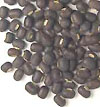
|
The nutritional protein in Urad dal is comparable to the protein derived from animal sources, making Urad dal a good substitute for those who eat meat due to protein consideration. Like other pulses, this black gram makes up for mineral deficiencies caused by a plain rice diet. According to Ayurveda, Urad is Madhur, Balya (gives strength), and is Vrishya (spermatogenic), Brihan (fattening), and is Stanya Janan (increase mothers milk), Ladoos made from Urad strengthen the nervous system, and the paste of Urad is used for massaging the body.
|
Urad Dal (White Lentils)
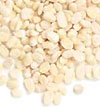
|
Black gram (or Urad dal) that has been split and skinned is much milder than unskinned Urad, and cooks more quickly. It gets a lovely, nutty flavor when quick roasted in a little ghee.
|
Chilke Dal
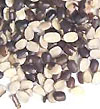
|
If you'd like something mid-way between the whole, unskinned Urad dal and the split and skinned lentils, try the split, unskinned Urad. Called Chilke dal, these are chewier than the skinned versions.
|
Channa Dal
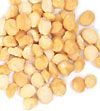
|
Channa Dal has a great flavor, being both sweet and nutty. Channa is one of the most popular dals in India. Channa dal is made by splitting a small relative of the Chickpea in half. This Dal is a dull yellow color, and lightens when it is cooked. Add a little turmeric to hold the lovely color. Channa Dal is renown for causing flatulence, which can be minimized (a little) by adding asafoetida to the dish. Channa Dal can often be substituted with Toor dal (which is a little smaller, or with yellow split peas garbanzo beans. While the consistency is similar, none of the latter have quite the same great taste as Channa.
|
Chowli Dal
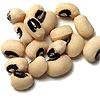
|
Chowli Dal is made by skinning and splitting Black-Eyed Peas. They cook fairly quickly, and shouldn't be over-cooked, as they get mushy.
|
French Lentils (Puy)
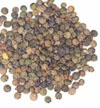
|
Not native to India, the French lentils were originally grown in the volcanic soils of Puy in France. They're wonderful in salads, staying firm after cooking. French Lentils have a rich flavor, and cook a bit slower than other lentils.
|
Horse Gram (Kulith)
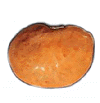
|
With a strong, earthy flavor, the Kulith gram is a staple of many India farm families.
|
Indian Lentil (Egyptian)
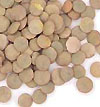
|
Perhaps one of the more popular lentils in Western cuisine, the Indian brown lentil is found in most grocery stores today. A dull khaki-color, these Lentils are also called German, continental, or brown lentils. They cook quickly, but get mushy if overcooked. To keep them nice and firm, add a little oil to the cooking water and cook for only 15 minutes or so.
|
Masoor Dal, Whole (Masoor, Masar)
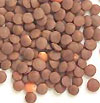
|
Masoor is highly nutritious and is warming for the body. A preparation of masoor dal cooked without its coat is very rich. The bitterness in the lentil may be removed by soaking it for some time with a little soda. According to Ayurveda, Masoor possesses the following properties; Poushtik (nutritious), Ushna (hot), Jwarhar (cures fever), and is recommended for diarrhoea as it thickens the stool. It is very beneficial when applied externally to the skin (as a face pack) and a paste of it can also be used on non-healing wounds.
|
Masoor Dal, Split
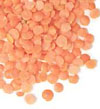
|
Skinned and split Masoor lentils are .salmon-colored. They cook quickly, and turn golden and mushy when cooked. For recipes that call for split Masoor dal, but that you wish to have hold more substance, try substituting red, green or yellow lentils OR green lentils, all of which hold their shape better when cooked.
|
Matar Dal (Green Split Peas)
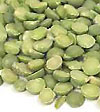
|
Matar Dal should be purchased as split pease, because they these don't need to be soaked and cook fairly quickly. This is a common pea for soups, and is usually interchangeable with the yellow Matar dal.
|
Matar Dal (Yellow Split Peas)

|
The yellow split Matar dal has an earthier flavor than their green counterparts. As above, you won't need to soak them if you buy them already split.
|
Moong Dal, Whole (Green Gram)
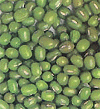
|
Amongst all the pulses, Moong has the least tendency to cause flatulence. It is easily digestible and is considered to be an ideal food for the ill. Moong (or Mung) flour is often used as a substitute for soap, especially for children. According to Ayurveda, it is swadisht (tasty), easily digestible and a soup of it is good for the sick. It is also sheetal, good for eyes and good for fever. Kulath (gahath) Kulath is used as a pulse. The ash of which contains one-third of its weight in phosphoric acid. According to ayurveda, it is a very good for breaking kidney stones (calculus) because it is a diuretic. Further it is Medhar (breaks down fat), Ushna, and a decoction of it is used for stones, cough and asthma.
|
Moong Dal, Split (Moong Beans)
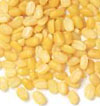
|
As with other dals, the split and skinned Moong cook much more quickly than the whole, unskinned type.
|
Red Lentils
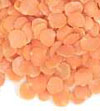
|
Another very common type of lentil, the Reds are actually a lovely salmon pink color when dried, turning golden when cooked. These lentils cook faster than others, and generally 'blow apart', losing most of their shape. Consequently, they're nice in purees or soups.
|
Toor Dal, Whole (Tur, Toovar, Arhar, Arthuka)
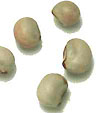
|
Toor, ro Toovar lentils are a greenish-tan color when whole, but they're usually sold skinned and split. Popular in Southern and Western India, this dal can be substituted with Channa dal or yellow split peas. Though this pulse originated in Africa, it has been written about in Sanskrit literature, where it is referred to as "arthuka". This highly nutritious dal is grown throughout India. According to Ayurveda, it is an anti-inflammatory, and the hot paste may be applied to the engorged breast to reduce milk production.
|
Toor Dal, Split (Yellow Lentils)
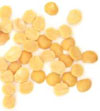
|
When skinned and split, the Toor dal reveals their yellow color. They have a mild, nutty flavor, and are often cooked as a side dish or ground into flour.
|
Val Dal, (Lablab Beans)
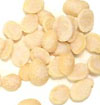
|
Val Dal is a skinned and split Lablab beans. They have a mild, slightly nutty flavor and hold a good consistency.
|

Legumes



|
|